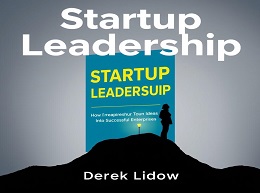Hacking Growth

Unleashing Potential with "Hacking Growth": A Comprehensive Review
In the fast-paced world of business, achieving rapid growth can seem like a daunting task. Yet, in "Hacking Growth: How Today's Fastest-Growing Companies Drive Breakout Success," authors Sean Ellis and Morgan Brown demystify the process, providing a comprehensive guide to scaling businesses effectively and efficiently. This review delves into the key concepts, practical strategies, and real-world examples presented in the book, illustrating how businesses of all sizes can apply growth hacking techniques to achieve remarkable results.
Defining Growth Hacking
Growth hacking is a mindset and a set of methodologies focused on achieving rapid, scalable growth by leveraging data, creativity, and a deep understanding of the customer. Unlike traditional marketing, which often relies on gut feeling and broad strategies, growth hacking is highly analytical, iterative, and focused on metrics that matter.
Example: Dropbox's Referral Program
One of the most famous examples of growth hacking is Dropbox's referral program. By offering extra storage space to users who referred friends (and to those friends), Dropbox created a viral loop that significantly accelerated user acquisition. This strategy, grounded in understanding user behavior and leveraging it for exponential growth, exemplifies the power of growth hacking.
The Growth Team
Ellis and Brown emphasize the importance of assembling a cross-functional growth team. This team should include members from marketing, product development, engineering, and data analysis, ensuring diverse perspectives and expertise. The collaboration within this team is crucial for identifying opportunities and executing growth experiments effectively.
Practical Insight: Building Your Growth Team
For a small startup, the growth team might be just a few people wearing multiple hats. The key is to ensure that all critical functions product, marketing, and data analysis are represented. As the company grows, these roles can become more specialized, but the collaborative spirit should remain intact.
The Growth Hacking Process
The authors outline a structured process for growth hacking, which includes the following steps:
1. Identify Growth Levers : Use data to identify the areas of your business with the highest potential for impact.
2. Generate Ideas : Brainstorm and prioritize growth ideas based on potential impact and ease of implementation.
3. Run Experiments : Implement the highest-priority ideas quickly, using A/B testing and other experimental methods.
4. Analyze Results : Review the data to determine the effectiveness of each experiment and iterate based on the findings.
Example: Airbnb's Experimentation
Airbnb's growth hacking journey involved running numerous experiments to improve user experience and conversion rates. One notable example was their use of professional photography to enhance property listings. This idea, generated through data analysis and user feedback, led to significantly higher booking rates, illustrating the power of the iterative growth hacking process.
Product-Market Fit
A fundamental principle in "Hacking Growth" is achieving product-market fit, which occurs when your product satisfies a strong market demand. Ellis and Brown argue that without product-market fit, growth efforts are futile. They provide actionable advice on how to measure and achieve this critical milestone.
Practical Insight: Measuring Product-Market Fit
One method to gauge product-market fit is through the "40% rule," where you survey your customers to see if at least 40% would be very disappointed if they could no longer use your product. If you meet or exceed this threshold, it’s a strong indicator of product-market fit.
Leveraging Data
Data is the cornerstone of effective growth hacking. The authors stress the importance of tracking key metrics and using data to inform decisions. They provide practical advice on setting up analytics infrastructure and interpreting data to uncover insights.
Example: LinkedIn's Data-Driven Growth
LinkedIn used data to drive its growth strategy by focusing on key metrics like user engagement and network growth. By analyzing how users interacted with the platform, LinkedIn was able to optimize its features and introduce new ones that significantly enhanced user value, leading to rapid growth.
Viral Loops and Network Effects
Creating viral loops and network effects is a powerful way to drive exponential growth. Viral loops occur when existing users bring in new users, creating a self-sustaining cycle of growth. Network effects happen when the value of a product increases as more people use it.
Practical Insight: Building a Viral Loop
To create a viral loop, you need to design your product in a way that incentivizes sharing. This can be achieved through referral programs, social sharing features, or user-generated content that attracts new users.
Case Study: Slack's Rapid Adoption
Slack, the popular team collaboration tool, leveraged growth hacking techniques to achieve rapid adoption. By focusing on creating a seamless onboarding experience and encouraging users to invite their colleagues, Slack quickly gained traction in the competitive software market.
Case Study: Instagram's Explosive Growth
Instagram's growth strategy involved simplifying the photo-sharing process and integrating with existing social networks like Facebook and Twitter. This ease of use and cross-platform sharing capability drove massive user acquisition and engagement, propelling Instagram to become one of the fastest-growing social media platforms.
Start Small and Scale
Ellis and Brown advise businesses to start with small, manageable experiments and scale up as they gain insights and see results. This approach minimizes risk and allows for quick adjustments based on data.
Practical Insight: Starting with MVP
A minimum viable product (MVP) is a great way to start small. By launching with the most essential features, you can test your ideas with real users, gather feedback, and iterate quickly without committing significant resources upfront.
Emphasizing Customer Feedback
Customer feedback is invaluable for growth hacking. Engaging with your users, understanding their pain points, and iterating based on their feedback can lead to substantial improvements and growth.
Example: Buffer's Feedback Loop
Buffer, the social media management tool, used customer feedback to shape its product development. By actively listening to user suggestions and incorporating them into the product, Buffer was able to build a loyal user base and drive sustainable growth.
The Power of Growth Hacking
"Hacking Growth" by Sean Ellis and Morgan Brown is a must-read for anyone looking to drive rapid and sustainable growth in their business. The book's practical advice, backed by real-world examples and a data-driven approach, makes it an invaluable resource for entrepreneurs, marketers, and business leaders.













